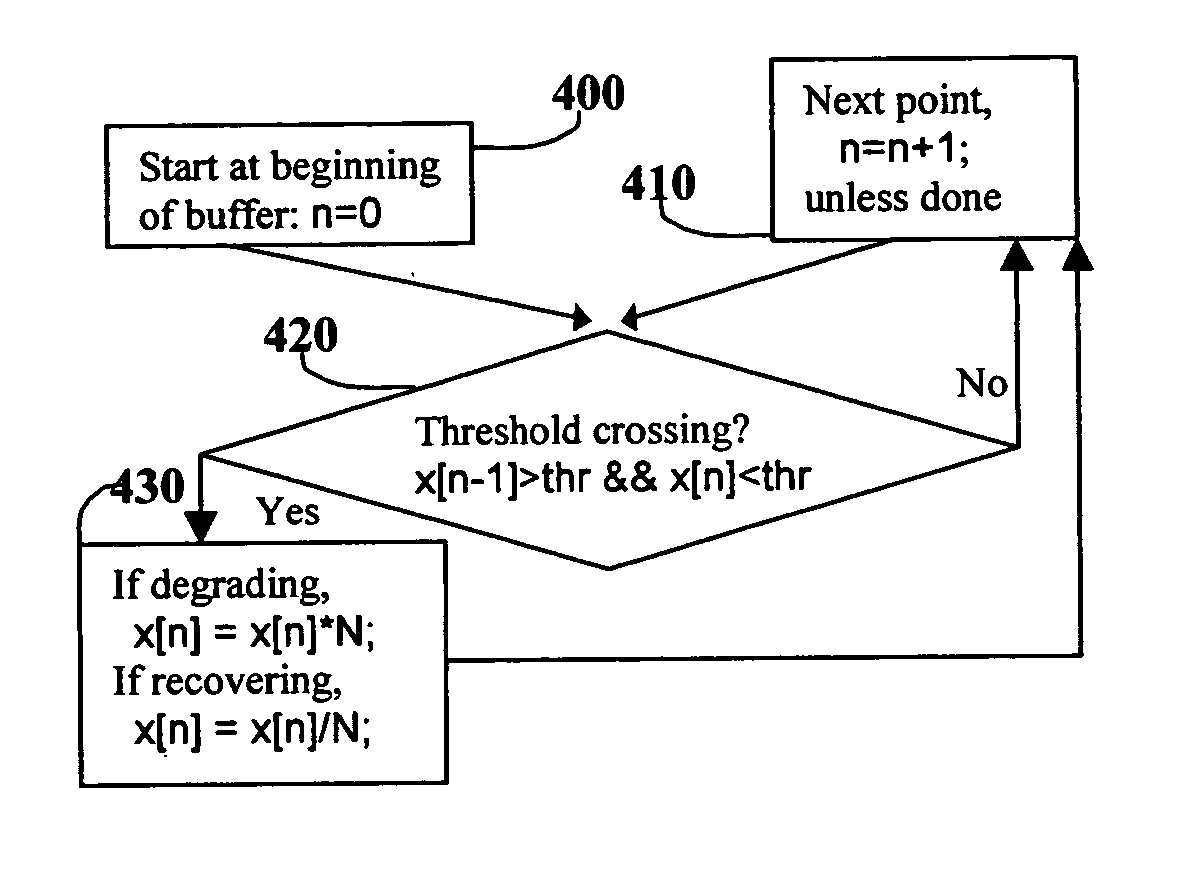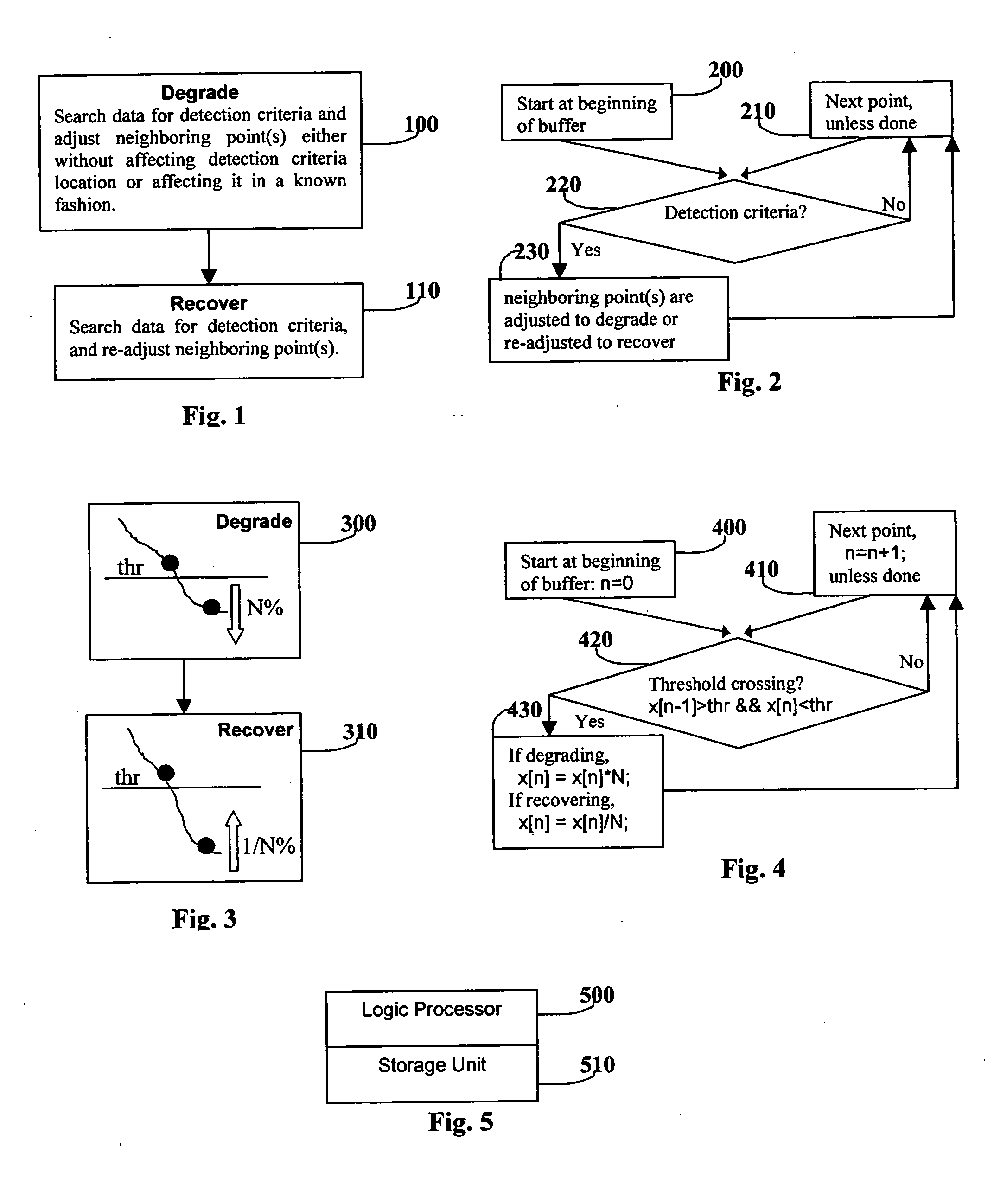Recoverable digital content degradation: method and apparatus
a digital content and digital content technology, applied in the field of recoverable digital content degradation : method and apparatus, can solve problems such as computational intensity, and achieve the effect of simple and efficient implementation
- Summary
- Abstract
- Description
- Claims
- Application Information
AI Technical Summary
Benefits of technology
Problems solved by technology
Method used
Image
Examples
Embodiment Construction
[0013] Below please find the definitions to terms and concepts that are used throughout this document. Digital content refers to digital data representing a perceived physical item, including but not limited to audio, video, and images. Digital data refers to the grouping of bits (1's or 0's) that represent a sample of the original digital content at an instant in time. Each bit group is equivalently referred to as a data point or sample. The data points are arranged in an order, many times representing a sequence versus time or frequency. In addition, the data points may be grouped again to form a subgroup, possibly used to represent a sequence versus frequency versus time, as is the case in MPEG standard compressed digital audio and video. Most importantly, the digital data has an order, with a beginning and end, such that searching the data is possible, and neighboring points can be defined as points close to each other. Finally, point(s) refer to one or several points.
[0014]FIG...
PUM
| Property | Measurement | Unit |
|---|---|---|
| threshold | aaaaa | aaaaa |
| threshold crossing | aaaaa | aaaaa |
| time | aaaaa | aaaaa |
Abstract
Description
Claims
Application Information
 Login to View More
Login to View More - R&D
- Intellectual Property
- Life Sciences
- Materials
- Tech Scout
- Unparalleled Data Quality
- Higher Quality Content
- 60% Fewer Hallucinations
Browse by: Latest US Patents, China's latest patents, Technical Efficacy Thesaurus, Application Domain, Technology Topic, Popular Technical Reports.
© 2025 PatSnap. All rights reserved.Legal|Privacy policy|Modern Slavery Act Transparency Statement|Sitemap|About US| Contact US: help@patsnap.com


